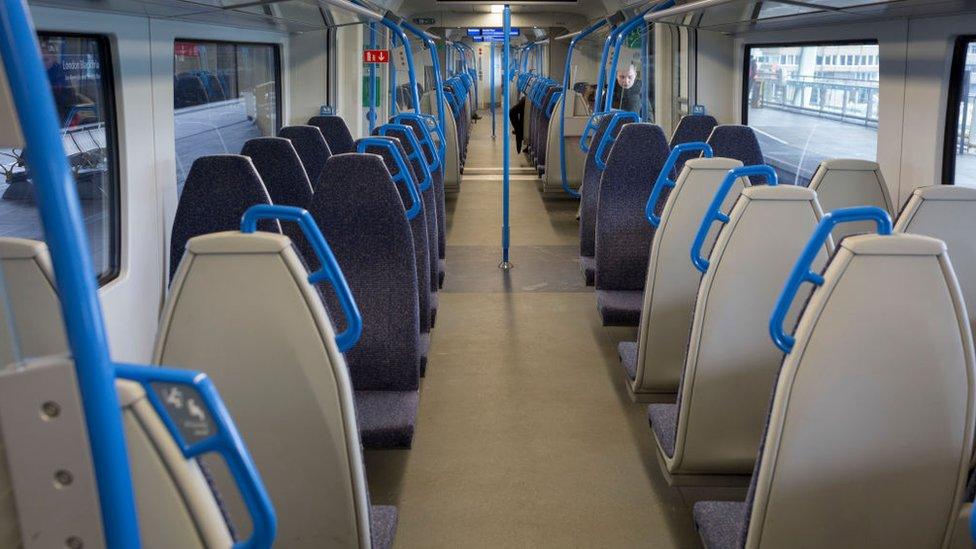Coronavirus: Is social distancing on trains here to stay?
- Published
- comments
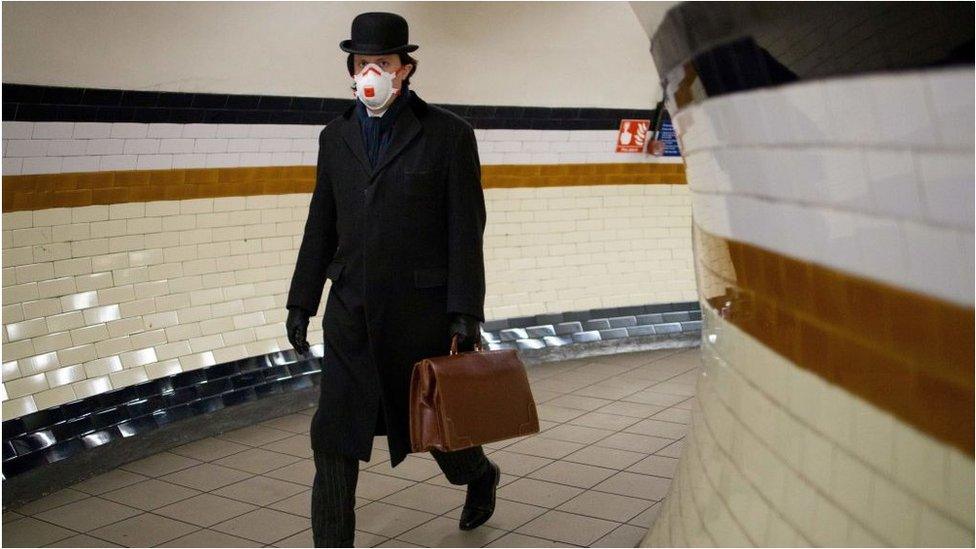
If the number of new cases of coronavirus drop off as hoped, the government will probably begin to lift elements of the lockdown within weeks.
Plans are already being made on how an uptick in passenger numbers on the railways, possibly in mid-May, can be managed in the wake of a pandemic.
Senior figures within the industry have told the BBC that ministers want some form of social distancing to persist.
But discussions are ongoing to try and work out what might be possible.
What are the challenges?
One rail boss said social-distancing of any kind would be "extraordinarily difficult" to manage and police. Another said it could reduce the capacity of an individual train by between 70% and 90%.
At the moment around half of normal train services in the UK are running so that essential journeys are possible.
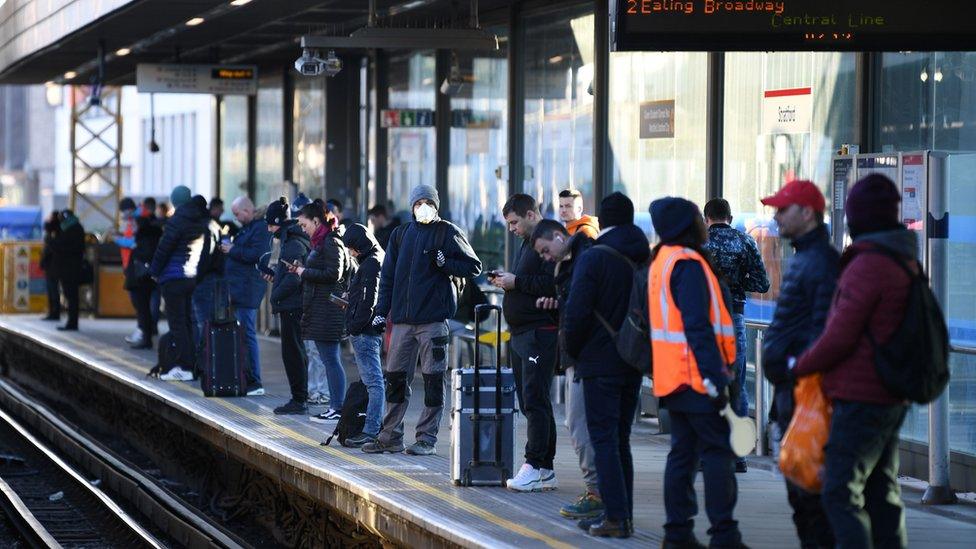
Public Health England is currently in discussions with the Department for Transport and Network Rail over what level of social distancing could be acceptable.
A source close to the talks said it was "not the territory of easy choices."
Can you limit passenger numbers?
Limiting the number of passengers on each train is a possibility.
That is a realistic option on long-distance inter-city routes where passengers can make advanced bookings
But it becomes fiendishly complicated on busy commuter lines with large numbers of stops, especially going in and out of major stations in larges cities such as Manchester or London.
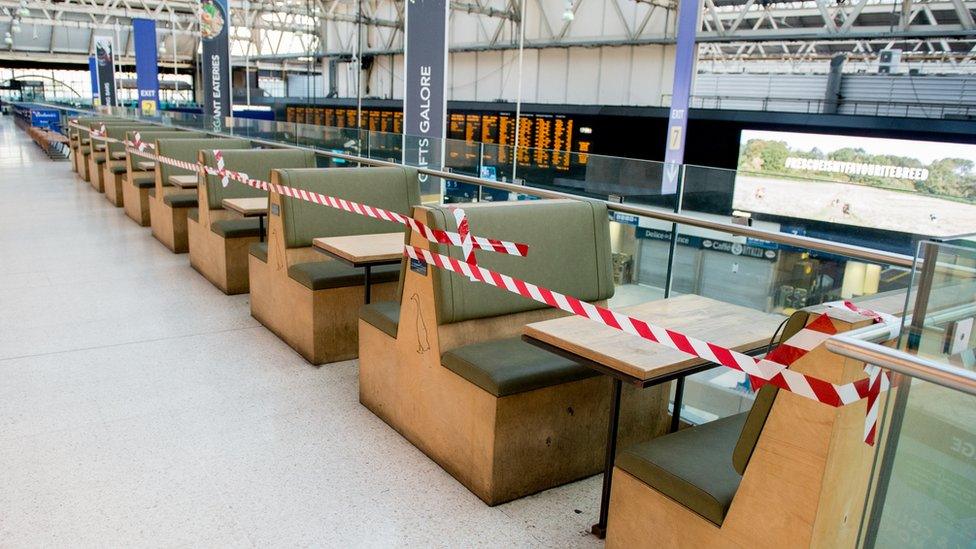
"Even with 20% of the normal passenger volume it gets quite difficult", said one figure involved in the planning.
At the moment overall passenger numbers are 3% of pre-crisis levels. Many trains are travelling around empty.
But how?
One possibility is that, like in Spain and Italy, only people working in specific sectors of the economy might initially be allowed back to work.
Staggering workers' hours to stem the flow of passengers at peak times would help, although the feasibility of that proposal for businesses will need to be worked out.
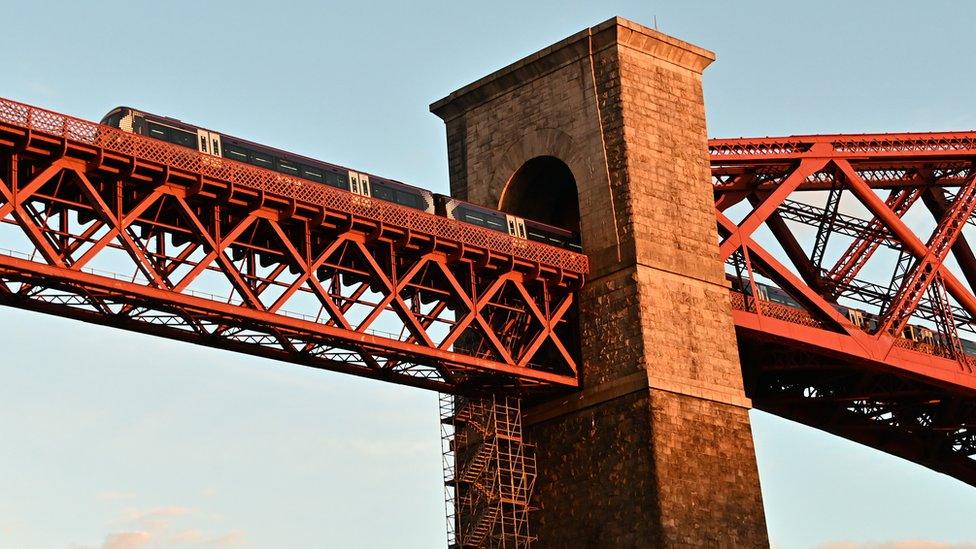
The reopening of schools also poses a challenge for the railways because children travelling by train usually do so in large groups at specific times of the day.
Equally, rail bosses believe that if it were possible to stagger school start times within a local area it would ease congestion to some extent.
What about more trains?
The Mayor of Greater Manchester Andy Burnham said it was his "expectation" from the government in Westminster that public transport "will have to operate with social distancing built in".
Mr Burnham called on the government to "manage expectations."
Increasing the number of train services on the network requires weeks of planning.
The scale of the challenge is illustrated by the busiest station in the country.

During the pandemic 5,000 people are travelling into London Waterloo each day.
125,000 normally make that journey.
The current level of train services running on weekdays in Britain - half what is usual - is similar to that on a Sunday in normal times.
An option being discussed is to ramp-up services to pre-crisis Saturday timetables.
Around 85% of weekday services would normally run on a Saturday.
Are there staff members available?
Like many other businesses train companies are experiencing staff shortages caused by the virus.
About 1 in 5 staff members at train companies are said to be off work.
The support of unions will be key.
Earlier this week the RMT union, which represents train guards, said there was "zero chance" that it would agree to an increase in rail services in mid-May.
Union boss Mick Cash said he would "not accept unsafe directives being handed down on high from the boardroom or the cabinet room."
On Wednesday Foreign Secretary Dominic Raab played-down the notion that rail services could increase by mid-May.
Rail bosses acknowledged that no firm direction had been given by Ministers or Public Health England but several senior figures told the BBC that contingency plans are being made for that scenario.
A spokesperson for the Rail Delivery Group, the body which represents train companies and Network Rail emphasized that any changes to travel guidance "will be a decision for government and rail companies are looking at a range of possible future scenarios."
The Department for Transport said that changes to rail services "will be subject to Public Health England guidance."
What is it all costing?
The financials of the situation can't be ignored.
During the pandemic the government is covering the losses made by train companies.
Revenue evaporated when travel restrictions began and passenger numbers nose-dived.
While the lockdown lasts it costs government £900m a month to keep Britains railways running.
- Published17 April 2020

- Published15 March 2020
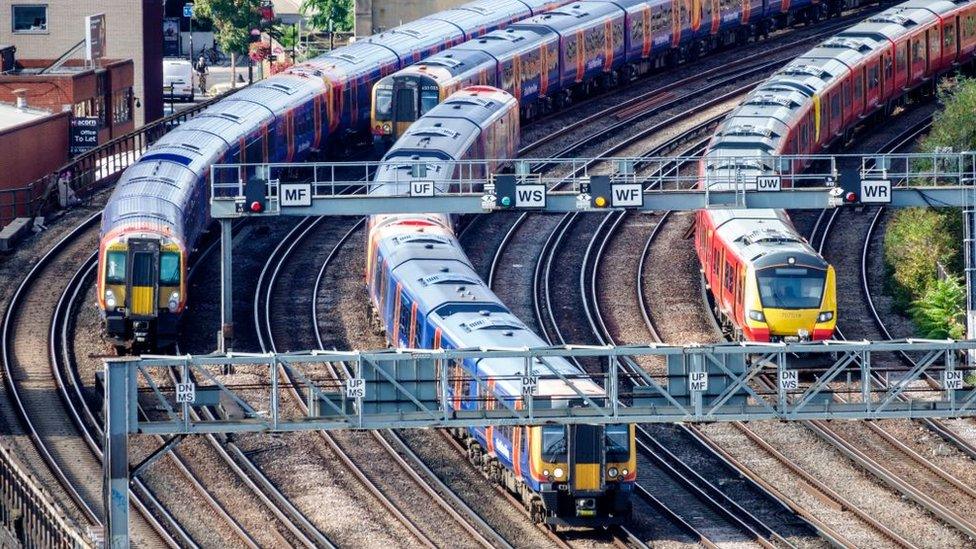
- Published18 March 2020
